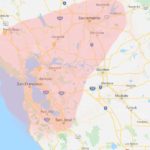
How to Recognize and Respond to a Heart Attack
by Chris Schlesinger
In Home CPR Blog
The most common signal of a heart attack is persistent chest pain that lasts more than 5 minutes. This pain can come and go, and if untreated can last for several hours. Some people describe this chest pain as pressure, aching, tightness or squeezing. A friend told me his heart attack felt “like an elephant stepping on my chest.”
While persistent chest pain is the primary indicator of a heart attack, there are a wide variety of signals. Some people feel discomfort in other parts of the upper body such as the shoulder, neck, arm, jaw, stomach or back. Trouble breathing is another signal, often experienced as faster breathing, noisy breathing and feeling short of breath. Some people become pale or ashen in their face. Others begin sweating heavily, become lightheaded, disoriented, and vomit.
Because the signals can vary, it’s not uncommon for a person who has previously had a heart attack to not realize they are having another one. However, since a heart attack can be life threatening, be proactive in getting help. Any unexplained pain in the upper body that persists should be taken seriously.
If the chest or upper body pain disappears and doesn’t come back, this may be a sign of angina. Angina is a temporary blockage of blood to the heart through an artery. This may be a signal of heart disease and is worth a visit to your doctor.
Responding to a Heart Attack
Many people do not know the signals of a heart attack and will deny they are having one. They will claim they are experiencing bad indigestion, heartburn, muscle spasms or muscle soreness. Almost half of all people experiencing a heart attack wait two hours or more before seeking medical help. Most people who die of a heart attack die within two hours of experiencing their first signals.
If you think someone is having a heart attack, the most important thing you can do is to get help. Call 911 or the emergency number appropriate to you. The priority is to get professionals with their equipment and drugs to get to the victim as soon as possible. Do not drive the victim to the hospital yourself – their condition could quickly change for the worse.
Have the person rest comfortably. Sitting is often the most comfortable position. Loosen any tight clothing, especially clothing that constricts breathing.
Ask the person if they have a history of heart disease. If they have a prescribed medication for chest pain associated with heart disease, assist them in taking it.
Aspirin helps slow blood clotting, which can help to keep blood flowing through a coronary artery during a heart attack. If the person is not allergic to aspirin, isn’t taking blood thinners like Coumadin, and hasn’t been told by their doctor not to take aspirin, give them 2 to 4 chewable baby aspirins (81 mg each) or one adult aspirin (325 mg) with a small amount of water. Do not offer them Tylenol or anti-inflamatory drugs such as Motrin, Aleve, Advil or ibuprofen.
Monitor the person’s condition and notice any changes in behavior or appearance. Information that you can provide to the responding emergency medical personnel may be helpful. If you know CPR, be prepared to do it. If an AED (automated external defibrillator) is available, bring it to where the victim is, and be prepared to use it if necessary.
About the Author:
Chris Schlesinger’s company In Home CPR teaches on-site safety classes at homes and businesses throughout the San Francisco Bay Area, serving Alameda, Contra Costa, Marin, Napa, Sonoma, San Mateo, Santa Clara and Solano counties. He offers certifications through the American Heart Association and American Red Cross in CPR, BLS, AED, standard first aid and pediatric first aid. Visit his websites at CPR Certification San Francisco or CPR Class San Mateo.
Copyright 2024 In Home CPR






